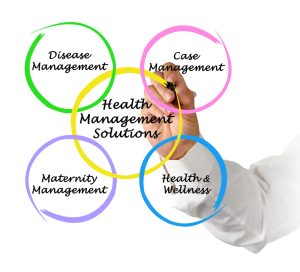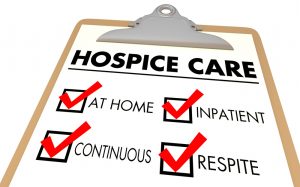Written by Dr. Dominick Flarey
-
Understanding Case Management in Home Health Care
Case management is a collaborative process that involves coordinating and integrating various healthcare services to meet an individuals specific needs. In the realm of home health care, case management plays a crucial role in ensuring that patients receive high-quality, personalized care within the comfort of their own homes . By bridging the gap between healthcare providers, patients, and their families, case management aims to enhance patient outcomes, improve quality of life, and optimize resource utilization . Case management in home health care encompasses a wide range of activities, including:
- Advocacy for patient rights and preferences
By streamlining the delivery of care and fostering effective communication, case management empowers patients and their families to actively participate in the healthcare decision-making process, ultimately leading to improved outcomes and increased satisfaction . Furthermore, advocacy for patient rights and preferences ensures that individuals have a voice in their treatment options, which is critical in navigating complex healthcare systems, particularly for vulnerable populations . This advocacy is increasingly recognized as a vital component in enhancing the quality of care and fostering a more patient-centered approach to healthcare services .
-
The Importance of Case Management in Enhancing Patient Outcomes
Effective case management plays a pivotal role in enhancing patient outcomes in home health care settings. By coordinating and integrating various healthcare services, case management ensures that patients receive the right care at the right time, tailored to their specific needs and preferences (Chopra V et al., 2020). This holistic approach not only improves clinical outcomes but also contributes to overall patient well-being and quality of life (Paul K Whelton et al., 2018). Some of the key benefits of case management in enhancing patient outcomes include:
- Improved Continuity of Care
Case managers act as a central point of contact, facilitating seamless transitions between different healthcare settings and providers, ensuring consistent and coordinated care delivery (Baillie et al., 2017). This integration is essential for improving continuity of care, particularly for older patients transitioning from hospital to home, as effective communication and collaboration among healthcare professionals can greatly enhance patient outcomes (McCarthy D et al., 2009). - Comprehensive Patient Assessment
Thorough patient assessments conducted by case managers allow for the identification of potential risks, barriers, and specific needs, enabling the development of personalized care plans that address each patients unique circumstances (Jeanne W McAllister et al., 2009). This comprehensive approach is crucial as it integrates various facets of a patients life, linking health care, education, and family support (Blumenthal D et al., 2006). - Effective Resource Utilization
By optimizing the allocation and utilization of healthcare resources, case management ensures that patients receive the appropriate level of care while minimizing unnecessary duplication or waste of services (Adjei M, 2024). Effective resource utilization is further supported by predictive analytics, which forecasts patient needs and enhances operational efficiency, allowing healthcare systems to allocate their resources more effectively (Kosaraju D, 2024). - Increased Patient Engagement
Through effective communication and education, case managers empower patients and their families to actively participate in the care process, fostering a sense of ownership and adherence to treatment plans (Susie Q Lew et al., 2020). This engagement not only enhances the patient-provider relationship but also improves health outcomes, as patients who are more informed tend to adhere better to prescribed therapies and make healthier choices (Tauben D et al., 2020). - Timely Interventions
Regular monitoring and evaluation by case managers enable early identification of potential issues or changes in a patients condition, allowing for timely interventions and adjustments to care plans, ultimately preventing complications and improving outcomes (Pope G et al., 2008). This proactive approach is particularly crucial in managing the health of the elderly, where evidence-based policies can significantly enhance care coordination and patient self-management (Morton S et al., 2015).
-
Key Components of Effective Case Management
Effective case management in home health care requires a comprehensive approach that encompasses various key components. These components work together to ensure the successful coordination and delivery of high-quality care tailored to each patients unique needs (Livingston G et al., 2020). Furthermore, addressing mental health considerations within case management is crucial, especially in light of the psychological impacts of situations such as the COVID-19 pandemic, which highlights the importance of integrated care that considers both physical and mental health (Emily A Holmes et al., 2020).
- Patient-Centered Care
Placing the patient at the center of the care process is essential. Case managers prioritize understanding the patients preferences, values, and goals, involving them and their families in decision-making processes . This approach is supported by evidence that emphasizes the benefits of coordinated care programs, which can improve patients clinical outcomes through tailored education and support (Hassaballa et al., 2015). Furthermore, effective care coordination extends beyond traditional medical settings, integrating health care with educational and family support services, thereby enhancing the overall patient experience (Jeanne W McAllister et al., 2009). - Comprehensive Assessment
A thorough assessment of the patients physical, emotional, social, and environmental needs is conducted to develop a holistic understanding of their situation and identify potential barriers or risks (Singh Y et al., 2024). This multifaceted approach aligns with current best practices in patient care management and underscores the importance of a collaborative methodology when addressing complex conditions (M Y Chong et al., 2024). - Care Plan Development
Based on the assessment findings, case managers collaborate with the healthcare team, the patient, and their family to develop a personalized care plan that outlines specific goals, interventions, and expected outcomes (Braga BG et al., 2024). This collaborative approach is essential in ensuring patient-centered care and fostering effective communication among all stakeholders involved in the management of chronic conditions (Wilfong K et al., 2024). - Care Coordination
Case managers serve as the central point of contact, facilitating communication and coordination among various healthcare providers, ensuring seamless transitions and continuity of care (T Bueser et al., 2024). This role is particularly crucial in settings such as oncology, where the risk of hospital readmissions is notably high (Tankersley C et al., 2024). - Resource Management
Effective resource management involves identifying and accessing appropriate community resources, healthcare services, and support systems to meet the patients needs while optimizing cost-effectiveness (Ashaye et al., 2018). This adaptability is crucial, as it requires a comprehensive understanding of available services and the integration of various sectors, such as education and family support (Jeanne W McAllister et al., 2009). - Monitoring and Evaluation
Regular monitoring and evaluation of the patients progress, adherence to the care plan, and response to interventions allow for timely adjustments and modifications as needed, enhancing overall treatment effectiveness and patient outcomes (Charles SCJ et al., 2024). This proactive approach is particularly crucial in chronic conditions, such as chronic kidney disease (CKD), where point-of-care testing can facilitate early intervention and tailored management strategies (R Gama et al., 2024) - Advocacy and Education
Case managers advocate for the patients rights, preferences, and best interests while providing education and support to empower patients and their families to actively participate in the care process (Deluca C et al., 2023). This advocacy is crucial for enhancing health functioning in the home, family, and healthcare settings, as effective communication about family health history can significantly impact patient outcomes and promote personalized health care (Sharon D Jones-Eversley et al., 2022). - Interdisciplinary Collaboration
Effective case management requires collaboration and communication among an interdisciplinary team of healthcare professionals, including physicians, nurses, social workers, therapists, and other specialists, to ensure a comprehensive approach to care (Alshehri HM et al., 2024). By integrating these key components, case management in home health care fosters a patient-centered approach that optimizes outcomes, enhances quality of life, and promotes efficient resource utilization (Li J, 2024).
-
The Role of Nurse Case Managers in Home Health Care
Nurse case managers play a pivotal role in the delivery of high-quality home health care services. With their unique blend of clinical expertise and care coordination skills, nurse case managers are well-equipped to navigate the complexities of the healthcare system and ensure that patients receive comprehensive and personalized care (Berry-Millett R et al., 2009). The primary responsibilities of nurse case managers in home health care include:
- Patient Assessment
Conducting thorough initial and ongoing assessments of the patients physical, emotional, social, and environmental needs to develop a comprehensive understanding of their condition and circumstances . This multifaceted approach is essential for effective care transitions, especially for older patients moving from hospital to home, as it highlights the need for interprofessional collaboration to address individual needs and improve communication with patients and families (Baillie et al., 2017). Additionally, recognizing the socio-economic and cultural barriers that may impact patient accessibility to care further underscores the importance of a holistic assessment (D Krol et al., 2013). - Patient Education and Advocacy
Providing education and support to patients and their families, empowering them to actively participate in the care process and advocating for their rights and preferences . This approach not only enhances patient autonomy but also improves health outcomes as informed patients are better equipped to make decisions regarding their care . Moreover, involving patients in conversations around their treatment fosters a sense of ownership and accountability in the management of their health, aligning with the principles of patient-centered care (John N Constantino et al., 2020). The integration of educational initiatives is paramount in bridging the gap between healthcare providers and patients, thereby addressing disparities in health information which can significantly impact treatment efficacy (Patel V et al., 2018). - Documentation and Reporting
Maintaining accurate and comprehensive documentation of patient assessments, care plans, interventions, and outcomes, ensuring effective communication among the healthcare team (Kale S et al., 2024). Nurse case managers in home health care play a crucial role in bridging the gap between healthcare providers, patients, and their families, ensuring that care is delivered in a coordinated, efficient, and patient-centered manner (Banzhaf S et al., 2022).
-
Strategies for Providing Quality Care Through Case Management
Providing high-quality care through case management in home health care settings requires a multifaceted approach that incorporates various strategies. By implementing these strategies, case managers can effectively navigate the complexities of the healthcare system, optimize resource utilization, and ensure that patients receive personalized, comprehensive care tailored to their unique needs (Saleh HH et al., 2024). Behavioral management strategies, including the integration of cooperation in care processes, can enhance patient experiences and outcomes, thereby aligning with case management goals of patient-centered care (S Oppler et al., 2024).
- Establish Clear Communication Channels
Effective communication is essential for successful case management. Case managers should establish clear communication channels with patients, their families, healthcare providers, and community resources (Alanazi MA et al., 2017). Regular communication ensures that all stakeholders are informed and engaged in the care process, which is critical for the effective integration of services and for enhancing patient outcomes (R Jayasena et al., 2016). - Foster Interdisciplinary Collaboration
Case management thrives on interdisciplinary collaboration. Case managers should actively collaborate with a team of healthcare professionals, including physicians, nurses, therapists, social workers, and other specialists, to ensure a comprehensive and coordinated approach to care (Baxter et al., 2008). Effective teamwork can significantly enhance clinical outcomes and optimize resource utilization, as demonstrated by physician-led models that foster such collaboration (McCarthy D et al., 2009). - Utilize Evidence-Based Practices
Incorporating evidence-based practices into case management strategies ensures that patients receive care based on the latest research and best practices (McCarthy D et al., 2009). Case managers should stay up-to-date with current guidelines, protocols, and treatment modalities to provide the most effective care (Berry-Millett R et al., 2009). - Implement Standardized Processes
Developing and implementing standardized processes for patient assessments, care plan development, and care coordination can enhance consistency and quality in case management practices (Falade I et al., 2024). These processes should be regularly reviewed and updated to align with best practices and evolving patient needs (Shittu RA et al., 2024). - Leverage Technology
Embracing technology can streamline case management processes and improve efficiency. Case managers can utilize electronic health records (EHRs), telehealth platforms, and other digital tools to facilitate communication, documentation, and care coordination (Susie Q Lew et al., 2020). The integration of telehealth not only enhances accessibility to care but also has demonstrated effectiveness in managing chronic conditions, thereby improving patient outcomes (Tauben D et al., 2020). - Provide Ongoing Education and Training
Investing in ongoing education and training for case managers is crucial to ensure they remain up-to-date with the latest developments in their field (Dale et al., 2006). This includes professional development opportunities, continuing education courses, and specialized training in areas such as care coordination, patient advocacy, and resource management (Hssain A et al., 2018). - Emphasize Patient-Centered Care
Placing the patient at the center of the care process is essential for providing quality care through case management. Case managers should prioritize understanding the patients preferences, values, and goals, involving them and their families in decision-making processes (Umayal K, 2024). The emphasis on patient-centered care (PCC) has been shown to significantly improve patient satisfaction and clinical outcomes, as evidenced by a case study highlighting the positive impact of PCC in an intensive care unit setting (Perianayagam J, 2024). - Continuously Evaluate and Improve
Regularly evaluating and monitoring the effectiveness of case management strategies is crucial for continuous improvement (Brufola et al., 2017). Case managers should collect and analyze data on patient outcomes, resource utilization, and stakeholder satisfaction to identify areas for improvement and implement necessary changes (Jeanne W McAllister et al., 2009). By implementing these strategies, case managers can enhance the quality of care provided in home health care settings, ensuring that patients receive personalized, coordinated, and effective care that meets their unique needs and improves overall outcomes.
-
How Case Management Reduces the Cost of Care
In addition to enhancing patient outcomes and quality of care, effective case management in home health care settings can significantly contribute to reducing the overall cost of care. By optimizing resource utilization, preventing unnecessary hospitalizations and readmissions, and promoting timely interventions, case management offers numerous cost-saving benefits (Blumenthal D et al., 2006). Moreover, addressing the complexity of healthcare needs in vulnerable patient populations can further drive down costs and improve quality (Berry-Millett R et al., 2009).
- Reduced Hospitalizations and Readmissions
Case managers play a crucial role in monitoring patients conditions and identifying potential issues or complications early on. Through proactive interventions and care plan adjustments, case managers can prevent or manage exacerbations, reducing the need for costly hospitalizations or readmissions . Effective management by case managers not only minimizes health care costs but also improves overall patient outcomes by ensuring timely care and support, contributing to enhanced quality of life for patients with chronic illnesses (Susie Q Lew et al., 2020). - Efficient Resource Utilization
By coordinating and integrating various healthcare services, case managers ensure that patients receive the appropriate level of care while minimizing duplication or waste of resources. This includes optimizing the utilization of home health services, durable medical equipment, and other healthcare resources. Effective resource utilization is critical in healthcare systems, particularly in low- and middle-income countries where resource constraints are prevalent (J I Aleme et al., 2024). Additionally, the strategic management of resources leads to improved patient outcomes and operational efficiency, as highlighted by studies showing that business intelligence tools significantly enhance decision-making and resource allocation (Shittu RA et al., 2024). - Timely Transitions of Care
Effective case management facilitates seamless transitions between different healthcare settings, such as hospitals, skilled nursing facilities, and home care. By ensuring proper communication and coordination during these transitions, case managers can prevent delays, complications, and unnecessary costs associated with fragmented care (Feld A et al., 2024). Additionally, timely transitions are critical in safeguarding patient outcomes, particularly in complex cases where patients may have multiple, ongoing health concerns (Santini A et al., 2024). - Medication Management
Case managers play a crucial role in medication management, ensuring that patients adhere to prescribed regimens and identifying potential medication-related issues or interactions (Blumenthal D et al., 2006). Effective medication management can prevent adverse events, reduce the need for additional healthcare interventions, and ultimately lower costs (Bosworth et al., 2010). - Promotion of Self-Management
Through patient education and empowerment, case managers equip patients and their families with the knowledge and skills necessary for effective self-management. This can lead to improved adherence to treatment plans, better management of chronic conditions, and reduced reliance on costly healthcare services (Gomes M dos Santos et al., 2014). Moreover, fostering self-management has been shown to enhance behavioral determinants of health, thereby addressing psychosocial factors that influence individual wellness (P Ahmed et al., 1979). - Collaboration with Community Resources
Case managers are well-versed in identifying and leveraging community resources, such as social services, support groups, and non-profit organizations (R F L Azevedo, 2022). By connecting patients with these resources, case managers can address non-medical needs that may impact health outcomes and reduce the burden on formal healthcare services (G Arthurs et al., 2014). - Data-Driven Decision Making
Case managers utilize data and analytics to inform their decision-making processes. By analyzing patient outcomes, resource utilization, and cost data, they can identify areas for improvement and implement strategies to optimize care delivery while controlling costs (Foundation RWJ, 2010). By leveraging these cost-saving benefits of case management, home health care organizations can provide high-quality care while simultaneously reducing the overall financial burden on patients, healthcare systems, and payers (Atwal A et al., 2014).
-
Real-Life Success Stories: Case Management Improving Patient Outcomes
Case management in home health care has proven its effectiveness in improving patient outcomes across various scenarios and conditions (Blumenthal D et al., 2006). These real-life success stories showcase the tangible impact of case management on individuals lives and the healthcare system as a whole (Ewart et al., 2019).
- Chronic Disease Management
A 68-year-old patient with multiple chronic conditions, including diabetes, hypertension, and heart failure, was struggling to manage her health and adhere to treatment plans. Through case management, a nurse case manager conducted a comprehensive assessment, developed a personalized care plan, and coordinated services from various healthcare providers (Trefethen E, 2020). Regular monitoring, education, and support from the case manager enabled the patient to better manage her conditions, resulting in improved clinical outcomes (C Lightfoot et al., 2023) and a significant reduction in emergency room visits and hospitalizations. - Post-Operative Care
A 52-year-old patient underwent a major surgery and was discharged from the hospital with complex care needs. The case manager worked closely with the patient, their family, and the healthcare team to develop a comprehensive home care plan. This included arranging for skilled nursing care, physical therapy, and necessary medical equipment. The case managers coordination and regular follow-ups ensured a smooth transition from the hospital to home, promoting faster recovery and reducing the risk of complications or readmissions (Elia et al., 2016). Furthermore, effective communication between healthcare providers and patients has been shown to significantly impact patient satisfaction and overall outcomes in post-operative care (Fortier et al., 2019). - Palliative Care
A 74-year-old patient with advanced-stage cancer required palliative care services to manage symptoms and improve quality of life. The case manager played a vital role in coordinating hospice services, arranging for in-home care, and facilitating communication among the patient, family, and healthcare team. By addressing the patients physical, emotional, and spiritual needs, the case manager ensured that the patient received compassionate and dignified care during their final stages of life (Aubin et al., 2018). The involvement of a case manager in palliative care has been shown to significantly enhance the overall care experience, as they provide essential support in navigating complex healthcare systems (Bunn et al., 2019). - Behavioral Health Support
A 42-year-old patient with a mental health condition and substance abuse issues was struggling to maintain stability and adhere to treatment plans. The case manager collaborated with mental health professionals, social workers, and community resources to develop a comprehensive care plan that addressed the patients unique needs (Jeanne W McAllister et al., 2009). Through regular check-ins, medication management, and connection to support services, the case manager helped the patient achieve improved mental health outcomes and a better quality of life (Blumenthal D et al., 2006). - Transitional Care
An 81-year-old patient was discharged from a skilled nursing facility after a prolonged stay due to a stroke. The case manager facilitated a seamless transition to home care by arranging for necessary home modifications, medical equipment, and skilled nursing services. Regular follow-ups and care plan adjustments by the case manager ensured that the patient received appropriate care and support, reducing the risk of readmissions and promoting independence (Harbi SA et al., 2024). These success stories highlight the profound impact that case management can have on patient outcomes, quality of life, and the overall efficiency of the healthcare system. By providing personalized, coordinated care and addressing the unique needs of each individual, case managers play a vital role in improving patient experiences and promoting better health outcomes, particularly for high-utilizing patients in emergency settings (Feld A et al., 2024). If you or a loved one are in need of home health care services, consider partnering with a reputable agency that offers comprehensive case management. Our team of experienced nurse case managers is dedicated to providing personalized, coordinated care tailored to your unique needs. Contact us today to learn more about how our case management services can enhance your health outcomes and quality of life.
-
Training and Certification for Nurse Case Managers
Nurse case managers play a pivotal role in the delivery of high-quality home health care services, and their expertise is essential in ensuring positive patient outcomes. To fulfill this critical role effectively, nurse case managers must undergo specialized training and obtain relevant certifications (Anne K Gauthier et al., 2010). This specialized training includes developing skills necessary for care coordination, patient advocacy, and the management of complex health needs, which are critical in navigating the fragmented healthcare delivery system (Anne K Gauthier et al., 2008).
- Education and Licensure
Nurse case managers are required to hold a valid nursing license, typically a Registered Nurse (RN) license. Many nurse case managers possess a Bachelor of Science in Nursing (BSN) degree or higher, such as a Master of Science in Nursing (MSN) or a Doctor of Nursing Practice (DNP) degree (Jessie et al., 2017). Some positions do not require a Bachelors degree in Nursing, but rather that a Nurse only be licensed as a Registered Nurse (Bobay et al., 2018). - Certification Programs
There are various certification programs available in Case Management. One program is offered by the American Academy of Case Management. This program provides registered nurses, licensed social workers, physicians, and other qualified candidates a full curriculum of study and the ability to obtain a dual Certification and Fellowship in the Academy in Case Management . Additionally, such certification programs are essential for ensuring that professionals are equipped with the knowledge and skills necessary for effective patient management, particularly as healthcare continues to evolve (Ramar K et al., 2021). - Continuing Education
Nurse case managers must continuously update their knowledge and skills to stay abreast of the latest developments in healthcare, case management practices, and regulatory requirements (S Patel, 2020). Ongoing education can be obtained through various avenues, such as: attending workshops, participating in online courses, and pursuing certifications that align with their professional responsibilities (Boles N et al., 2017). - Specialized Training
Depending on their area of practice, nurse case managers may seek additional specialized training in areas such as: mental health promotion, which has been shown to improve outcomes for older adults with depressive symptoms and reduce the use of health services (Browne et al., 2014); and care management strategies that address the complexities of patients healthcare needs, particularly for vulnerable populations (Berry-Millett R et al., 2009). - Care transitions and discharge planning
Leadership and Management Skills: Effective case management requires strong leadership and management skills. Nurse case managers often benefit from training in areas such as communication, conflict resolution, team building, resource management, and quality improvement (Berry-Millett R et al., 2009). By investing in comprehensive training and obtaining relevant certifications, nurse case managers can enhance their knowledge, skills, and credibility, ultimately enabling them to provide high-quality, patient-centered care and improve outcomes in home health care settings (Lord C et al., 2021). As the healthcare landscape continues to evolve, case management and home health care will undoubtedly experience significant changes and advancements. Staying informed about emerging trends is crucial for healthcare providers, policymakers, and stakeholders to ensure the continued delivery of high-quality, patient-centered care (Ragini R Kudchadkar et al., 2020), (Berry-Millett R et al., 2009).
References:
- Hassaballa, Ithar (2015). Examining Implementation and Effects of a Diabetes Self-Management Education and Support Program for African American Women Living in Boston Public Housing. https://core.ac.uk/download/213412949.pdf
- Jeanne W. McAllister, Jill Popp, Richard Antonelli (2009). Making Care Coordination a Critical Component of the Pediatric Health System: A Multidisciplinary Framework. https://core.ac.uk/download/71352885.pdf
- Baillie, LJ, Baillie, LJ, Martin, F, Martin, F, Scotter, J, Scotter, J, Sykes, SM, Sykes, SM, Thomas, B, Thomas, B (2017). Enhancing Care Transitions for Older People through Interprofessional Simulation: A Mixed Method Evaluation. https://core.ac.uk/download/131317303.pdf
- Krol, K. Cheung, K. Cruz, L. Carver, M. Revels (2013). Providing Preventive Oral Health Care to Infants and Young Children in Women, Infants, and Children (WIC), Early Head Start, and Primary Care Settings. https://core.ac.uk/download/71362896.pdf
- Bobay, Kathleen L., Candela, Lori, Piacentine, Linda B., Weiss, Marianne E. (2018). Teaching students to teach patients: A theory-guided approach. https://core.ac.uk/download/286544047.pdf
- Rachel Berry-Millett, Thomas Bodenheimer (2009). Care Management of Patients With Complex Health Care Needs.
- Dale, Jeremy, Docherty, Andrea, Sturt, Jackie, Taylor, Hafrun, Taylor, Louise (2006). A psychological approach to providing self-management education for people with type 2 diabetes : the diabetes manual. https://core.ac.uk/download/49247.pdf
- Ait Hssain, Ali, Al Disi, Mohammed, Alhomsi, Yahya, Alinier, Guillaume, Alsalemi, Abdullah, Amira, Abbes, Bensaali, Faycal, Fawzy Hassan, Ibrahim, Ibrahim, Abdul Salam Saif, Labib, Ahmed (2018). Addressing the challenges of ECMO simulation. https://core.ac.uk/download/287580894.pdf
- Carmine Deluca, Michael Beyer, Heather Drew, Jeffrey Murray, Jessica Massey, Brian Koffman, K. Battiato, John Gribben, N. Lamanna, Christina Russomanno (2023). The Value of Collaboration with Patient Advocacy Organizations to Enhance Initiatives Focused on Patient-Centered Care and Improve Outcomes in Chronic Lymphocytic Leukemia. Blood. https://www.semanticscholar.org/paper/e22d706bd930fef9e54b2c22e1cff8c033150e7c
- Sharon D. Jones-Eversley, Dawn O. Witherspoon, Cynthia M. Vejar (2022). A Model for Examining Family Health History Awareness: Rethinking How to Increase Its Interfamilial and Clinical Utility and Transmission. Volume(28), 45 – 52. Professional Case Management. https://www.semanticscholar.org/paper/37d068f9cb0e900d6264f329e04baac415cc25b6
- Marina Gomes dos Santos, Patrícia dos Santos Claro Fuly (2014). Home visit and health education, promotion of quality of life in oncology patients. Volume(8), 904-909. Journal of Nursing Ufpe Online. https://www.semanticscholar.org/paper/8ff46996619d12493dabe02fcf20a8c6d5f1d3c7
- Ahmed, G. V. Coelho, A. Kolker (1979). Toward a new definition of health : psychosocial dimensions. https://www.semanticscholar.org/paper/211cee3f165320a69923ebe6915c7392dba707a3
- Sachin Kale, A. Vatkar, Gursimram Singh Sandhu, Yash Tantia (2024). Professional Indemnity what Orthopods Need to Know. Volume(14), 4 – 6. Journal of Orthopaedic Case Reports. https://www.semanticscholar.org/paper/21b42847c64b90499025ecf65bbe9855347203fc
- Sara Banzhaf, James F. Adams, Maureen Donohue-Smith, Krystyna de Jacq, Liz Hutson, Latonia Chalmers, Lyons Hardy, Dorothy, Jordon, Karen G. Pounds, Marian Farrell, Daniel Wesemann, Sean Convoy, Kate Melino, Dawn, M. Goldenstein (2022). APNA 35th Annual Conference, October 13-16, 2021: Pre-Conference Session Abstracts. Volume(28), NP45 – NP57. Journal of the American Psychiatric Nurses Association. https://www.semanticscholar.org/paper/1bfb86eda766844143c8138cdd27e126ca66c205
- April Feld, Matt Carollo, Jere Freeman-Reyes, Susan McCarthy, Mary Ann Lind, Robert Weinstein, Caitlin O’Dea, Maria Joy, Eric J Morley, Paul Aitken, Robert Schwaner, Dominic Giarraputo, Samita M. Heslin (2024). Gather “Round”: An Integrated Care Model for the Emergency Department Multi-Visit Patient.. Professional case management. https://www.semanticscholar.org/paper/41c36f7906f9df882594484a0895d0183df1a4a5
- Anna Santini, I. Avagnina, M. C. Affinita, Anna Zanin, Franca Benini (2024). Is it early enough? The authentic meaning of the pediatric palliative approach between early and late referral in pediatric oncology: a case study. Volume(14). Frontiers in Oncology. https://www.semanticscholar.org/paper/cb99a937645163c5f374f3d9924eb5b91892a6c4
- F. L. Azevedo (2022). SYMPOSIUM PRESENTATION 3: PHYSICAL AND MENTAL HEALTH Health technology innovations. https://www.semanticscholar.org/paper/4169bd2a24ece4d850a2c4a85e9e29428009cc17
- Arthurs, J. Simpson, A. Brown, Ohnma Kyaw, Sharon Shyrier, C. Concert (2014). The effectiveness of therapeutic patient education on adherence to oral anti‐cancer medicines in adult cancer patients 18 years and older in an ambulatory care setting: a systematic review protocol. Volume(12), 64–67. JBI Database of Systematic Reviews and Implementation Reports. https://www.semanticscholar.org/paper/ac1baae69b69637f5f69cc900a35f453e6a36c3a
- Brufola, Ilaria, Corsaro, Alice, Damiani, Gianfranco, DE VITO, Corrado, Marzuillo, Carolina, Massimi, Azzurra, Migliara, Giuseppe, Rega, MARIA LUISA, Ricciardi, Walter, Villari, Paolo (2017). Are community-based nurse-led self-management support interventions effective in chronic patients? Results of a systematic review and meta-analysis. https://core.ac.uk/download/98335847.pdf
- Patel (2020). Assessing the Need for Standardized Pre-Chemotherapy Education: An Outpatient Oncology Clinic Initiative. https://www.semanticscholar.org/paper/f3718fa0422ab9bd07c4d3b4d07c026530cb3dfc
- Nicholle Boles, Anne Gowac (2017). The Role of the Pharmacist in Home Healthcare.. Home Healthcare Now. https://www.semanticscholar.org/paper/143c650033fb6b417c3990fcc55d9250de5cc3ae
- Mohammed Ayyat Alanazi, Muteb Saeed Saud Alharbi, Mubarak Awad Alshammari, Abdullah lbrahim Alsulaiman, Khalid Ali Almzairie (2017). Enhancing patient care efficiency: The role of health administration technicians in streamlining community health services. International journal of health sciences. https://www.semanticscholar.org/paper/1c8e61d877c22276d6a19fa7b2b882b750b174d7
- Jayasena, Branko Cellar, R. Sparks, M. Varnfield, Jane Li, S. Nepal (2016). Monitoring of Chronic Disease in the community: Australian Telehealth Study on Organisational Challenges and Economic Impact. Volume(16), 106. International Journal of Integrated Care. https://www.semanticscholar.org/paper/84b990ef4edc1374ebf65a0f955ede097042b8c7
- Simon Chandramohan Jason Charles, Krishna Anusha, Krishna Mahesh, Ramachandran Ramasubramanian, Perumal Kaliraj, Vimalraj Selvaraj (2024). Enhancing Tuberculosis Treatment Adherence: Evaluating the Efficacy of the Support for Treatment Adherence and Medication Protocols (STAMP) Device for Automatic Dispensing and Real-Time Medication Monitoring. Volume(16). Cureus. https://www.semanticscholar.org/paper/08265f104cc4cb9e21e3f5a38623bde734c3ecc9
- Gama, Danilo Nebres, Kate Bramham (2024). Community Point of Care Testing in Diagnosing and Managing Chronic Kidney Disease. Volume(14). Diagnostics. https://www.semanticscholar.org/paper/97fe674e2d06418446756a5db69d4f67d6b3dbaf
- Gregory Pope, John Kautter, Jyoti Aggarwal, Michael Trisolini, Musetta Leung (2008). The Medicare Physician Group Practice Demonstration: Lessons Learned on Improving Quality and Efficiency in Health Care. https://core.ac.uk/download/71353237.pdf
- Sally Morton, William Dunn (2015). Addressing the Health Needs of an Aging America: New Opportunities for Evidence-Based Policy Solutions. https://core.ac.uk/download/75783019.pdf
- Ashaye, Kunle, Braun, Andreas, Dickinson, Angela, Gage, Heather, Goodman, Claire, Hamilton, Laura, Iliffe , Steve, Manthorpe , Jill, Trivedi, Daksha (2018). Managing behavioural and psychological symptoms in community dwelling older people with dementia:1. A systematic review of the effectiveness of interventions. https://core.ac.uk/download/287580879.pdf
- Aubin, Michele, Fallon-Ferguson, Julia, Grant, Matthew, Johnson, Claire V, McVey, Peta, Mitchell, Geoffrey, Monterosso, Leanne, Nwachukwu, Harriet, Rhee, Joel J, Senior, Hugh, Williams, Briony, Yates, Patsy (2018). General practice palliative care: Patient and carer expectations, advance care plans and place of death-a systematic review. https://core.ac.uk/download/213608014.pdf
- Bunn, Frances, Goodman, Claire, Lynch, Jennifer, Miranda, Rose, Van den Block, Lieve (2019). Palliative care for people with dementia living at home: a systematic review of interventions. https://core.ac.uk/download/287581886.pdf
- Sultanah Al Harbi, Baker Aljohani, Lamiaa Elmasry, Frenk Lee Baldovino, Kamille Bianca Raviz, Lama Altowairqi, Seetah Alshlowi (2024). Streamlining patient flow and enhancing operational efficiency through case management implementation. Volume(13). BMJ Open Quality. https://www.semanticscholar.org/paper/ab3d5debfd197e778fa98823ae6f5047fa3e95c5
- Ewart, Paul, Louie, Ken (2019). Supporting community engagement through teaching, student projects and research. https://core.ac.uk/download/322841894.pdf
- Haya Muhaysin Alshehri, Majed Hulayyil Alharbi, Hanaa Mohammedzakary Juharji, Mohammed Ahmad Albishry, Aisha Mohib Omairan, Yousef Mansoor Ahmed Albeshri, Eman saleem Albarkatee, Abeer Abduraboh Almuwallad, Etaf ali Kassem, Amirah hasan Alharthi (2024). Integrating Nursing and Family Medicine: A Comprehensive Review of Interdisciplinary Approaches in Patient-Centered Care. Journal of Ecohumanism. https://www.semanticscholar.org/paper/a454eb6a10571dbe57f6124b4ac03de09d528526
- Jiale Li (2024). Practical Exploration of Strengthening Team Communication and Cooperation in Head Nurse Nursing Management. Journal of Clinical and Nursing Research. https://www.semanticscholar.org/paper/4d9bfbce731727b91e935aeb83100fda3c2109e4
- Haifa Hadi Saleh, Zeyad Ali Abbas, Nabaa Latif, Ziyad Tariq Khalil (2024). Agile Management in Healthcare Improving Patient Outcomes through Flexibility and Responsiveness. Journal of Ecohumanism. https://www.semanticscholar.org/paper/5d443806bc0a3c123ef3a31150d6739cdc6bdabd
- Oppler, Sierra D. Palmer, Sydney N. Phu, Melanie L. Graham (2024). The Role of Behavioral Management in Enhancing Clinical Care and Efficiency, Minimizing Social Disruption, and Promoting Welfare in Captive Primates. Volume(11). Veterinary Sciences. https://www.semanticscholar.org/paper/4b427a2b56dd396f2bcf161dacff87ea3d7889a0
- Lightfoot, T. Wilkinson, Alice C. Smith (2023). #3213 PATIENT ACTIVATION STATUS AND PATIENT PERCEIVED FUNCTION IMPAIRMENT IN CKD: A ROUTE TO OPTIMISING LIFE PARTICIPATION THROUGH ENHANCED SELF-MANAGEMENT?. Nephrology Dialysis Transplantation. https://www.semanticscholar.org/paper/2224331b659e174eea4906e466e9034b182a1982
- Emily Trefethen (2020). An Education Program for Novice Nurses to Increase Case Management Knowledge. https://www.semanticscholar.org/paper/4c82b88fdabff2e5dc8cdab28b271a3fe7a72e90
- Anita Atwal, Arthur Money, Atwal, A, Audet, AM, Bagozzi, R.P, Barlow, J, Bodenheimer, T, Boyatzis, R, Chau, P, Chong, A, Davis, F, Hanington, B, Iwarsson, S, Joffe, H, King, N, Lee, Y, Leuty, V, Lysack, Cl, Madill, A, Michele Harvey, Moats, G, Money, A, Newman, J, Sutcliffe, A, Unsworth, CA, Verdonck, M (2014). Occupational therapists’ views of using a virtual reality interior design application within the pre-discharge home visit process. https://core.ac.uk/download/29140205.pdf
- Rahman Akorede Shittu, Anita Jumai Ehidiamen, Opeyemi Olaoluawa Ojo, Stephane Jean Christophe Zouo, Jeremiah Olamijuwon, Bamidele Michael Omowole, Amarachi Queen Olufemi-Phillips (2024). The role of business intelligence tools in improving healthcare patient outcomes and operations. World Journal of Advanced Research and Reviews. https://www.semanticscholar.org/paper/9fc78dbc9bbe5a707e555973ae986f7d8755e5f3
- Ifeoluwa Falade, Gideon Gyampoh, Emmanuel Akpamgbo, Oragui Chika, Okiemute R Obodo, O. Okobi, John Aguguo, Victor Chukwu (2024). A Comprehensive Review of Effective Patient Safety and Quality Improvement Programs in Healthcare Facilities. Medical Research Archives. https://www.semanticscholar.org/paper/07eabf23f3cd7f447c92812d7e886a8af8d59414
- KM Umayal (2024). Strategic Integration of Digital Health Technologies for Enhanced Patient-Centered Care in Modern Healthcare Management. Shanlax International Journal of Management. https://www.semanticscholar.org/paper/8ecbbb0e0253def3c19850a064884b2ac09193fd
- John Perianayagam (2024). REVAMPING CRITICAL CARE: A PATIENT-CENTERED APPROACH – A CASE STUDY. INTERNATIONAL JOURNAL OF SCIENTIFIC RESEARCH. https://www.semanticscholar.org/paper/4ebce4b747daea027475c55647ec8c29b7df4495
- I. Aleme, F. O. Adeniji, D. S. Ogaji (2024). EFFECTIVENESS OF THE BALANCED SCORECARD IN IMPROVING STAFF PERFORMANCE, PATIENT OUTCOMES AND RESOURCE OPTIMIZATION IN LOW- AND MIDDLE-INCOME COUNTRIES: A SYSTEMATIC REVIEW.. Volume(41 11 Suppl 1), S28 . West African journal of medicine. https://www.semanticscholar.org/paper/44a8935a6dc5a6697501ccf9a286d76d24ffc682
- Monica Adjei (2024). HUMAN RESOURCE MANAGEMENT IN CRISIS COMMUNICATION WITHIN THE HEALTHCARE SECTOR: A CASE STUDY OF HOSPITALS IN GHANA. Komitmen: Jurnal Ilmiah Manajemen. https://www.semanticscholar.org/paper/e7102f4c66e0cd8f87d4baf9c12c3e60141e7eb6
- Deekshitha Kosaraju (2024). Predictive Analytics in Healthcare: Leveraging AI to Anticipate Disease Outbreaks and Enhance Patient Outcomes. Galore International Journal of Health Sciences and Research. https://www.semanticscholar.org/paper/3de05adec9be85f1526f2b1c1233927626aac832
- Kannan Ramar, Raman K. Malhotra, Kelly A. Carden, Jennifer L. Martin, Fariha Abbasi-Feinberg, R. Nisha Aurora, Vishesh K. Kapur, Eric J. Olson, Carol L. Rosen, James A. Rowley, Anita Valanju Shelgikar, Lynn Marie Trotti (2021). Sleep is essential to health: an American Academy of Sleep Medicine position statement. Volume(17), 2115-2119. Journal of Clinical Sleep Medicine. https://jcsm.aasm.org/doi/10.5664/jcsm.9476
- Yogendra Singh, C. Pandey, Nitin Chandola, Deeksha Agarwal (2024). Smartphone-based 12-lead electrocardiogram monitoring in an elderly patient with multimorbidity: A case report of comprehensive cardiac assessment using the Spandan device. Heart India. https://www.semanticscholar.org/paper/2a8a2f7fd90ad6bbab20f30fecedb9ea812474bb
- Y. Chong, A. J. Baldwin, A. Krzak, A. Murray (2024). 471 Enhancing Outcomes and Improving Patient Services in Complex Abdominal Wall Reconstruction Through Multidisciplinary Collaboration. British Journal of Surgery. https://www.semanticscholar.org/paper/ed95de06491a669baa4fd22714676272a787403d
- Catherine Lord, Tony Charman, Alexandra Havdahl, Paul S. Carbone, Evdokia Anagnostou, Brian A. Boyd, Themba Carr, Petrus J. de Vries, Cheryl Dissanayake, Gauri Divan, Christine M. Freitag, Marina M. Gotelli, Connie Kasari, Martín Knapp, Peter Mundy, Alex Plank, Lawrence David Scahill, Chiara Servili, Paul Shattuck, Emily Simonoff, Alison Singer, Vicky Slonims, Paul P. Wang, María Célica Ysrraelit, Rachel Jellett, Andrew Pickles, James Cusack, Patricia Howlin, Péter Szatmári, Alison Holbrook, Christina Toolan, James B. McCauley (2021). The Lancet Commission on the future of care and clinical research in autism. Volume(399), 271-334. The Lancet. https://doi.org/10.1016/s0140-6736(21)01541-5
- Ragini R. Kudchadkar, Michael Lowe, Mohammad K. Khan, Stephanie M. McBrien (2020). Metastatic melanoma. Volume(70), 78-85. CA A Cancer Journal for Clinicians. https://acsjournals.onlinelibrary.wiley.com/doi/10.3322/caac.21599
- John N. Constantino, Mustafa Şahin, Joseph Piven, Rylin Rodgers, John Tschida (2020). The Impact of COVID-19 on Individuals With Intellectual and Developmental Disabilities: Clinical and Scientific Priorities. Volume(177), 1091-1093. American Journal of Psychiatry. https://doi.org/10.1176/appi.ajp.2020.20060780
- Vikram Patel, Shekhar Saxena, Crick Lund, Graham Thornicroft, Florence Baingana, Paul Bolton, Dan Chisholm, Pamela Y. Collins, Janice L. Cooper, Julian Eaton, Helen Herrman, Mohammad M. Herzallah, Yueqin Huang, Mark J. D. Jordans, Arthur Kleinman, María Elena Medina‐Mora, Ellen Morgan, Unaiza Niaz, Olayinka Omigbodun, Martin Prince, Atıf Rahman, Benedetto Saraceno, Bidyut K. Sarkar, Mary De Silva, Ilina Singh, Dan J. Stein, Charlene Sunkel, Jürgen Unützer (2018). The Lancet Commission on global mental health and sustainable development. Volume(392), 1553-1598. The Lancet. https://doi.org/10.1016/s0140-6736(18)31612-x
- Susie Q. Lew, Eric Wallace, Vesh Srivatana, Bradley A. Warady, Suzanne Watnick, Jayson Hood, David L. White, Vikram Aggarwal, Caroline Wilkie, Mihran V. Naljayan, Mary Gellens, Jeffrey Perl, Martin J. Schreiber (2020). Telehealth for Home Dialysis in COVID-19 and Beyond: A Perspective From the American Society of Nephrology COVID-19 Home Dialysis Subcommittee. Volume(77), 142-148. American Journal of Kidney Diseases. https://doi.org/10.1053/j.ajkd.2020.09.005
- David Tauben, Dale J. Langford, John A. Sturgeon, Sean D. Rundell, Cara Towle, Christina Bockman, Michael K. Nicholas (2020). Optimizing telehealth pain care after COVID-19. Volume(161), 2437-2445. Pain. https://doi.org/10.1097/j.pain.0000000000002048
- Elia, M, LAVIANO, Alessandro, Norman, K., Normand, C. (2016). A systematic review of the cost and cost effectiveness of using standard oral nutritional supplements in community and care home settings.
- Vineet Chopra, Scott A. Flanders, Megan O’Malley, Anurag N. Malani, Hallie C. Prescott (2020). Sixty-Day Outcomes Among Patients Hospitalized With COVID-19. Volume(174), 576-578. Annals of Internal Medicine. https://www.acpjournals.org/doi/10.7326/M20-5661
- Paul K. Whelton, Robert M. Carey, Wilbert S. Aronow, Donald E. Casey, Karen J. Collins, Cheryl Dennison Himmelfarb, Sondra M. DePalma, Samuel S. Gidding, Kenneth Jamerson, Daniel W. Jones, Eric J. MacLaughlin, Paul Muntner, Bruce Ovbiagele, Sidney C. Smith, Crystal C. Spencer, Randall S. Stafford, Sandra J. Taler, Randal J. Thomas, Kim A. Williams, Jeff D. Williamson, Jackson T. Wright (2018). 2017 ACC/AHA/AAPA/ABC/ACPM/AGS/APhA/ASH/ASPC/NMA/PCNA Guideline for the Prevention, Detection, Evaluation, and Management of High Blood Pressure in Adults: Executive Summary: A Report of the American College of Cardiology/American Heart Association Task Force on Clinical Practice Guidelines. Volume(138). Circulation. https://www.ahajournals.org/doi/10.1161/CIR.0000000000000597
- Gill Livingston, Jonathan Huntley, Andrew Sommerlad, David Ames, Clive Ballard, Sube Banerjee, Carol Brayne, Alistair Burns, Jiska Cohen‐Mansfield, Claudia Cooper, Sergi G. Costafreda, Amit Dias, Nick C. Fox, Laura N. Gitlin, Robert Howard, Helen C. Kales, Mika Kivimäki, Eric B. Larson, Adesola Ogunniyi, Vasiliki Orgeta, Karen Ritchie, Kenneth Rockwood, Elizabeth L. Sampson, Quincy M. Samus, Lon S. Schneider, Geir Selbæk, Linda Teri, Naaheed Mukadam (2020). Dementia prevention, intervention, and care: 2020 report of the Lancet Commission. Volume(396), 413-446. The Lancet. https://doi.org/10.1016/s0140-6736(20)30367-6
- Emily A. Holmes, Rory C. O’Connor, V. Hugh Perry, Irene Tracey, Simon Wessely, Louise Arseneault, Clive Ballard, Helen Christensen, Roxane Cohen Silver, Ian Everall, Tamsin Ford, Ann John, Thomas Kabir, Kate King, Ira Madan, Susan Michie, Andrew K. Przybylski, Roz Shafran, Angela Sweeney, Carol M. Worthman, Lucy Yardley, Katherine Cowan, Claire Cope, Matthew Hotopf, Edward T. Bullmore (2020). Multidisciplinary research priorities for the COVID-19 pandemic: a call for action for mental health science. Volume(7), 547-560. The Lancet Psychiatry. https://doi.org/10.1016/s2215-0366(20)30168-1
- Beatriz Gil Braga, Joana Tavares, Maria João Carvalho (2024). A perspective on integrated dialysis access management: in advance of integrated care plan. Bulletin de la Dialyse à Domicile. https://www.semanticscholar.org/paper/fa20d78c3063c1c441cd6241dae2131bdfb0f24a
- Kadrin Wilfong, Michael Beyer, U. B. Basu Roy, Nikki A. Martin, Stephen V. Liu, Dana Wills, Heather Drew (2024). Enhancing oncologist knowledge and skills through patient-centric medical education: A collaborative approach with LUNGevity.. Journal of Clinical Oncology. https://www.semanticscholar.org/paper/478224a0a84710351a02821f11c48d46aa266453
- Bueser, E. Costafreda, T. Fajardo, S. Janssens, H. Katus, S. Morner, M. Pinciroli, S. Taylor, M. Tome Esteban, P. Tiramani, J. N. Trochu, R. Veltrop, I. Olivotto (2024). Cardiomyopathies matter: a multistakeholder european initiative to improve patient outcomes through effective health policies. European Journal of Cardiovascular Nursing. https://www.semanticscholar.org/paper/614fb5f44fe93c4ca3cd57b0c764c6be30481536
- Cynthia Tankersley, Tiffany Hoy, Rachel Depperschmidt, Anna McGrath (2024). Enhancing care coordination through transitional care management.. JCO Oncology Practice. https://www.semanticscholar.org/paper/ab95720defb7c0ab9b96c6ca0ff48519bd5c605d
- Anne K. Gauthier, Kristin Sims-Kastelein, Mary Takach, Neva Kaye (2010). Strengthening Primary and Chronic Care: State Innovations to Transform and Link Small Practices. https://core.ac.uk/download/71355266.pdf
- Anne K. Gauthier, Anthony Shih, Douglas McCarthy, Karen Davis, Rachel Nuzum, Stephen C. Schoenbaum (2008). Organizing the U.S. Health Care Delivery System for High Performance. https://core.ac.uk/download/71353608.pdf




































